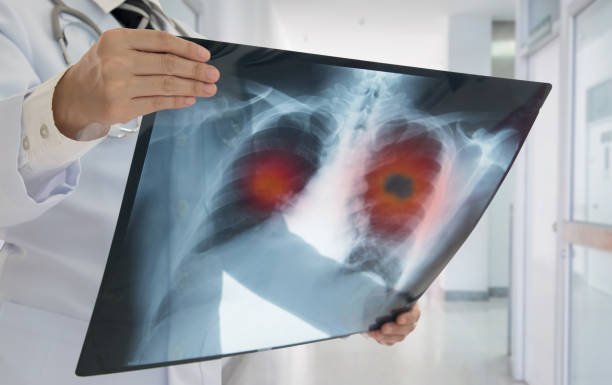What is Squamous Cell Carcinoma? Survival Rates, Early Symptoms, Treatments and Causes
Grandpa Andrew, who is 80 years old, has been smoking for 60 years. Five years ago, he was receiving treatment for tuberculosis and followed the doctor’s advice to quit smoking. He thought his condition could be controlled, but recently his voice suddenly became hoarse for more than 10 days. He first went to the otolaryngology department and found that his vocal cords were found. Paralysis, it was suspected that the lesion was related to the mediastinal cavity. After being referred to the thoracic medicine department for examination, the result was that he had “squamous cell carcinoma of the lung”.
Squamous cell carcinoma sounds strange. What are the causes of this cancer? What symptoms may occur? Can it be cured after treatment? This article will help you find out!
What is squamous cell carcinoma?
Squamous cell carcinoma, named because the cancer cells are flat in shape, like fish scales, is more common in men who smoke for a long time. It is one of the “non-small cell cancer” types of lung cancer and accounts for about 20% of all lung cancer cases. .
Squamous cell carcinoma tumors usually grow in the middle of the lungs and close to the hilum. They can easily block the trachea, causing the patient to experience shortness of breath, and may spread to lymph nodes in the mediastinum. Compared with small cell lung cancer and other Non-small cell lung cancer and squamous cell carcinoma tumors grow more slowly and therefore worsen more slowly.

Four high-risk groups for squamous cell carcinoma
The following are 4 high-risk groups that are susceptible to squamous cell carcinoma:
- Long-term smokers:
Squamous epithelial cell lung cancer is the same as small cell lung cancer. The main reason is caused by long-term smoking. Not only smokers, but also those who inhale secondhand smoke for a long time are also prone to squamous epithelial cell carcinoma. - People who are often exposed to carcinogens in their work environment:
People who are exposed to carcinogens such as asbestos, benzene, tobacco, and tar in their work environment, and who often inhale mineral or metal dust generated at work, are more likely to develop squamous epithelial cell lung cancer. - People living in an air-polluted environment:
Pollutants in the air also contain many carcinogens. Long-term exposure without wearing a mask can easily increase the risk of squamous cell carcinoma. - Family history of squamous cell carcinoma:
A small number of patients have a family history of squamous cell carcinoma or genetic inheritance.
6 common symptoms of squamous cell carcinoma
Squamous cell carcinoma tumors grow slowly. Therefore, when the tumor is small, the patient may not have obvious symptoms. If the tumor grows to a certain extent, the patient may have the following 6 symptoms, which must be paid special attention to:
- Cough
- Coughing up blood
- Chest pain
- Fever
- Hoarseness
- Shortness of breath
How is squamous cell carcinoma diagnosed?
If patients have the above symptoms, they should seek medical examination as soon as possible; if they are a group at high risk of squamous cell carcinoma, it is recommended that lung cancer screening be arranged regularly to detect lung nodules and treat them early to prevent the condition from worsening.
Doctors generally use the following four methods to check patients for squamous cell carcinoma:
- Chest X-ray
- Low-dose computed tomography (LDCT)
- Bronchoscopy biopsy
- DNA Testing

Common treatments for squamous cell carcinoma
Squamous cell lung cancer is mainly treated with surgery in the early stage. Depending on the tumor growth, doctors will perform segmental resection, wedge resection, lobectomy or pneumonectomy on the patient to effectively remove the cancer cells.
For patients who are not suitable for surgery or have metastasized, doctors will recommend chemotherapy first. Anti-cancer drugs can be controlled intravenously or orally through intravenous injection or oral administration to control the growth of cancer cells or reduce uncomfortable symptoms, and may be combined with radiation therapy as appropriate. Use high-energy radiation to kill cancer cells; or use targeted therapy to inhibit tumor growth in the body to achieve the effect of treating squamous cell carcinoma. After treatment, the patient’s 5-year survival rate can reach 22%.
3 steps to prevent squamous cell carcinoma
- Quit smoking: Smoking accounts for the vast majority of causes of squamous cell carcinoma. Quitting smoking can effectively reduce the chance of suffering from squamous cell lung cancer and prevent relatives and friends around you from inhaling secondhand smoke and becoming indirect victims.
- Avoid contact with chemicals: Workers who are exposed to carcinogenic chemicals for a long time should wear masks and gloves to minimize the chance of physical contact with chemicals and reduce the risk of squamous cell carcinoma.
- Avoid inhaling excessive air pollution sources: Wear a mask when entering and leaving public places to reduce inhaling excessive air pollution sources.












